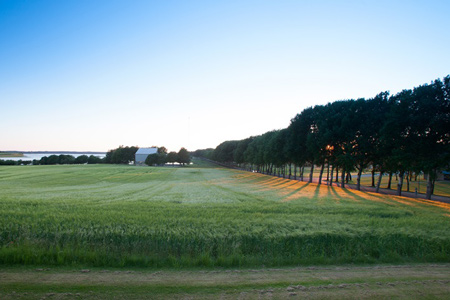Researchers at DTU Nutech develop and apply knowledge about radioactive substances and ionizing radiation. Nuclear technologies are put to uses as diverse as curing cancer and dating cave paintings.
Every day, researchers from DTU Nutech pass the graphic timeline illustrating the level of radiation in the Danish environment. The timeline is positioned just inside the main entrance to Building 204 on Risø Campus and testifies to the unbroken measurement of radioactive substances in Denmark dating back to 1957. Even before the official opening of the Atomic Energy Commission’s Research Establishment Risø in 1958, Danish scientists were already taking local samples of the air, water, plants and fish to map the background radiation at the site where the facility was to be built.

Since then, researchers from DTU Nutech have carried on building on the work of these pioneers. Today, they continue to develop and utilize the huge volume of knowledge about radioactive substances and ionizing radiation to the benefit of society as a whole.
The findings from their research are transformed into a wide variety of products and services for companies, hospitals, public authorities, other research institutions and media. This has made DTU Nutech a world champion in the application of nuclear technologies.
“Over the past 60 years, we have built up a pool of knowledge which means we are specialists in an area that has been largely forgotten elsewhere in the world. This applies, for example, to the determination of certain radioactive isotopes that are formed inside nuclear power plants, but which are difficult to measure. We thought that interest in measuring these substances was dying out, but it has recently become relevant again because the time has now come to close and decommission (i.e. demolish, ed) a large number of nuclear facilities. Germany and Sweden are turning to us for help in performing advanced chemical analyses,” relates Jens-Peter Lynov, Director of DTU Nutech.
Always radioactive
He explains that we are exposed to radiation 24/7. In addition to cosmic radiation from space, we are affected by radiation from radioactive substances stemming from the formation of the Earth itself. All life on Earth therefore has the capacity to withstand a degree of radioactivity. But not everyone is aware of that.
“Towards the end of the 1970s, we witnessed appreciable public opposition to nuclear power in Denmark. There was the accident on Three Mile Island in Pennsylvania in the United States, and people started to question whether this was a form of energy we wanted here. This opposition gradually expanded to encompass all forms of radioactivity, but no mention was made of the fact that radioactivity is natural. It’s always there. In fact, a precondition for life on Earth is that radioactive decay takes place in the Earth’s crust. Otherwise, the planet would be too cold to support life.”
Four major fields of research at DTU Nutech
1. Radioecology
2. Dosimitry
3. Radioactive pharmaceuticals
4. Design and construction of ESS